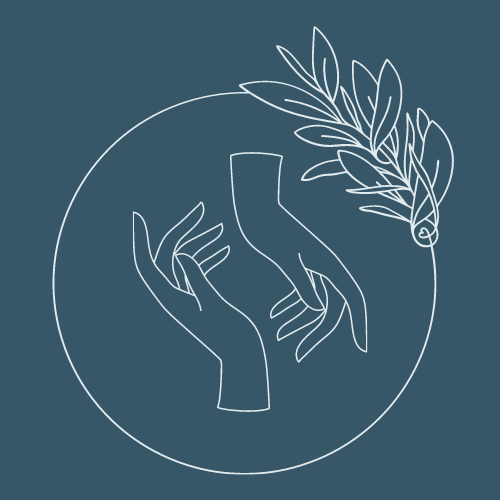How To Know Which Massage Is Right For You
Today my hope is that you will finally discover which massage is right for you. There are three main types of massage I want to discuss, the first being:
1. Swedish
Hands down the most popular form of massage, and therefore most common, is Swedish. Unless a 30-minute session, it is always a full-body massage that can consist of a light to medium to firm pressure.
One of my expectations upon my first Swedish massage was that my upper shoulder tension would be “fixed” after the 45 minute session was over. Swedish massage I came to learn, however, is not meant for treatment, so if you expect to be treated for a particular issue (e.g. chronic lower back pain, a rotator cuff injury, and, in my case, upper shoulder tension, which is very common) realize that is not what Swedish massage promotes. It promotes:
overall relaxation
circulation of blood and lymph flow— therefore naturally detoxifying the body
secretion of endorphins and enkephalins which are natural pain-killers and mood elevators (who doesn’t want to be happier and less stressed?!)
better digestion
better range of motion
ease of muscular tension
The list is pretty sizable and could continue! Nevertheless, in case your expectation of Swedish was similar to mine, it is a relaxation-based massage, which is very beneficial for mental, emotional and physical stress, but does not have a focused treatment goal.
2. Deep Tissue
Deep Tissue, on the other hand, is a form of very specific bodywork, and, when performed during a 60 and/or 90 minute session is best when focused on only two quadrants of the body, whereas a 30 minute session is best designed for only one quadrant.
There are four total quadrants in the body:
the back/back of neck
the chest/front of neck
front of legs
back of legs
Although there are places that offer a full-body, deep tissue treatment in 60 minutes, this is, in reality, a disservice to the client. In recognizing the specific nature of Deep Tissue, it requires much patience for the body to release and re-balance, and to force that release in such a short period of time is overwhelming and can be seriously detrimental to the body. It’s for that reason my focus during Deep Tissue bodywork is specific to only one or two areas of the body at a time.
With all that to say, it is important to realize Deep Tissue is NOT working into pain, but is, rather, working on a deeper level.
Pain is your body’s first warning sign that something isn’t right. To “fight through the pain” can cause injury, or worsen a current or past issue that may never be repaired. To experience discomfort or soreness after a massage or even after a workout should come naturally as your body is building, healing and/or detoxifying, not because you fought your body through pain to get there.
That now brings us to:
3. Integrated
Integrated Massage is the most treatment-oriented of the three. It is personally tailored to each person’s needs, first consisting of a postural assessment of the body to see what is out of balance, then implementing these five main areas:
I. Deep Tissue
II. Swedish
III. Connective Tissue
Connective tissue work is unique in that, rather than working with muscles, it works with fascia or, more simply, your superficial skin. This doesn’t sound impressive, until we realize skin is the largest organ in the body. So in implementing this bodywork, utilizing what are called “rolling” and “mobilization” techniques, it:
loosens built up scar tissue
loosens adhesions in the body
mobilizes the surrounding tissue
improves flexibility
—and, therefore, creates better access to the deeper, tense muscles that lie underneath our surrounding skin. Where our skin is “immobilized”, the muscle underneath is sure to be as well. The mobility of our skin is directly related to the quality of our muscles.
IV. Trigger Point Therapy
Trigger points, which are hyper-irritable points in tight bands of muscle, are also released in an integrated session during the deep tissue work, and are released either through static touch or pulsing.
V. Stretching
The muscles with released trigger points are then stretched post-session, after the muscles have been warmed up and released. This is the best time to stretch.
In summary
Swedish Massage works on a general level to promote overall relaxation, whereas Deep Tissue works on a very specific level to promote the release of chronic tension.
And Integrated Massage, being the most treatment-oriented, is where you’ll see the most drastic results and changes in your flexibility, range of motion, and tension patterns.
Other Massage Types
These are the three main forms of massage explained in detail. There are, however, many other forms of massage that are specific to special populations that include:
prenatal massage
-assists with sciatic pain, edema, and low back painhospice massage
-decreases anxiety and depression, boosts overall moodoncology massage (for those with cancer)
-same benefits as above!infant massage (taught by a therapist, but meant to be performed by the parent)
-instills bonding, increases weight gain, improves digestionlymphatic drainage massage
-strengthens immune system, reduces edema, swelling, and inflammationsports massage (for anyone that is athletic, not just for those in sports!)
-improves performance, assists in rehabilitation of injuries, restores flexibility
In future blog posts, I’ll cover some of them in more specific detail, but I will leave you with that for now! I hope you walk away from this post with a sure feeling of what type of massage is right for you, and, if not, I hope you experiment until you do!
Thanks for stopping by! Have a blessed Sunday, friends.
